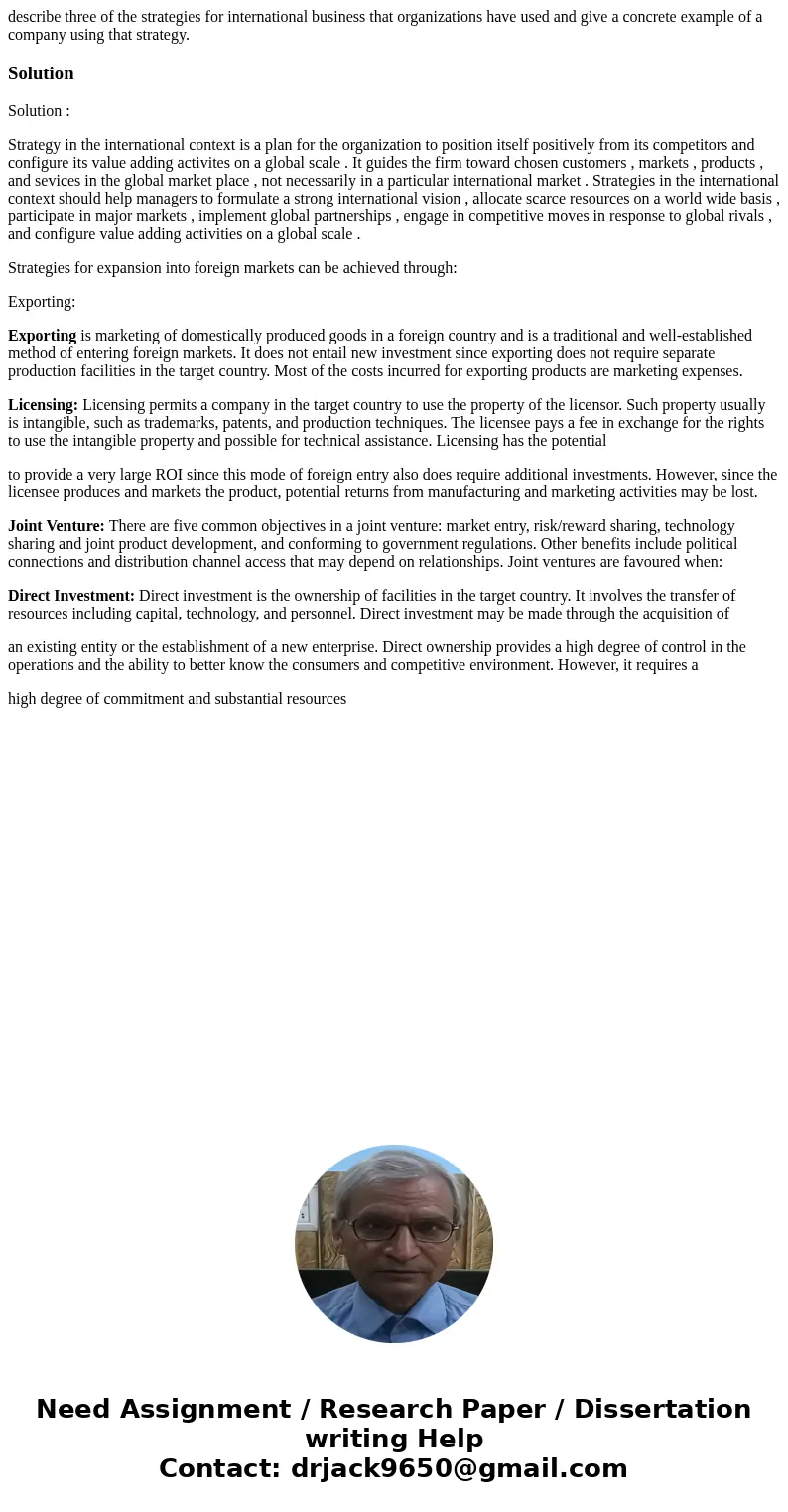describe three of the strategies for international business
describe three of the strategies for international business that organizations have used and give a concrete example of a company using that strategy.
Solution
Solution :
Strategy in the international context is a plan for the organization to position itself positively from its competitors and configure its value adding activites on a global scale . It guides the firm toward chosen customers , markets , products , and sevices in the global market place , not necessarily in a particular international market . Strategies in the international context should help managers to formulate a strong international vision , allocate scarce resources on a world wide basis , participate in major markets , implement global partnerships , engage in competitive moves in response to global rivals , and configure value adding activities on a global scale .
Strategies for expansion into foreign markets can be achieved through:
Exporting:
Exporting is marketing of domestically produced goods in a foreign country and is a traditional and well-established method of entering foreign markets. It does not entail new investment since exporting does not require separate production facilities in the target country. Most of the costs incurred for exporting products are marketing expenses.
Licensing: Licensing permits a company in the target country to use the property of the licensor. Such property usually is intangible, such as trademarks, patents, and production techniques. The licensee pays a fee in exchange for the rights to use the intangible property and possible for technical assistance. Licensing has the potential
to provide a very large ROI since this mode of foreign entry also does require additional investments. However, since the licensee produces and markets the product, potential returns from manufacturing and marketing activities may be lost.
Joint Venture: There are five common objectives in a joint venture: market entry, risk/reward sharing, technology sharing and joint product development, and conforming to government regulations. Other benefits include political connections and distribution channel access that may depend on relationships. Joint ventures are favoured when:
Direct Investment: Direct investment is the ownership of facilities in the target country. It involves the transfer of resources including capital, technology, and personnel. Direct investment may be made through the acquisition of
an existing entity or the establishment of a new enterprise. Direct ownership provides a high degree of control in the operations and the ability to better know the consumers and competitive environment. However, it requires a
high degree of commitment and substantial resources

 Homework Sourse
Homework Sourse